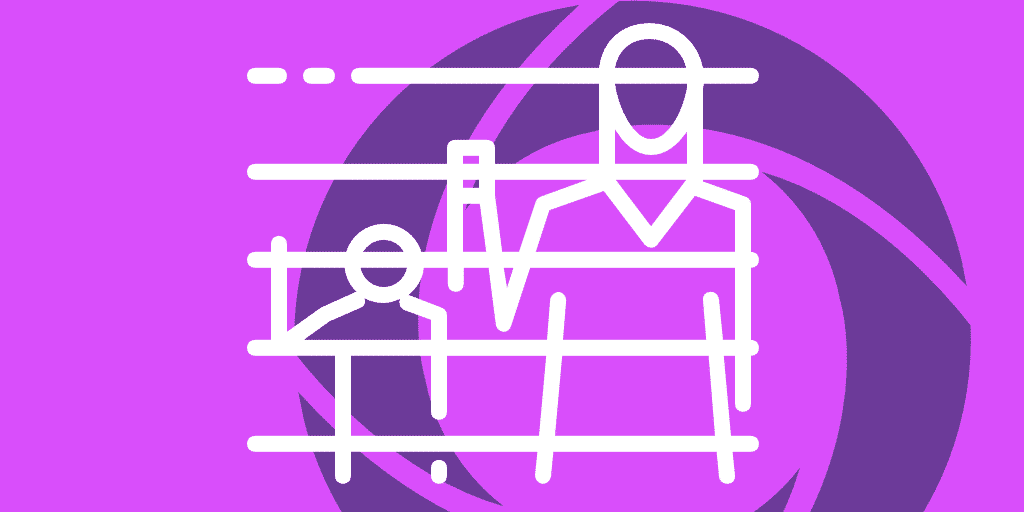Every person has the right to live free from persecution, or the fear of persecution, based on their race, religion, nationality, membership in a particular social group, or political opinion.
Though every government is obligated to provide this right, many fail. Every year millions of people face persecution for traits they cannot control or exercising their religious or political beliefs.
When governments fail to protect these rights, people have the right to move to a country that will protect them. This is the right to asylum.
People who seek to exercise this right are called “asylum seekers” and once granted asylum, they hold refugee status. The difference between asylum seekers and refugees is discussed here.
In 1951, the formal basis for exercising the right to asylum was established by an international treaty, the Geneva Convention Relating to the Status of Refugees. Countries signing that Convention have an obligation to provide asylum or refuge to people fleeing persecution.
Where to seek asylum?
Though the standard for asylum is effectively the same on paper, there are significant differences in the way countries apply the law, the assistance they provide to asylum seekers, and the rates at which different countries recognise asylum seekers from respective countries of asylum.
What all this means is that asylum seekers fleeing the same country for the same reasons can have vastly different experiences depending on where they go, how they get there, and the extent to which they can prove their case. These are the essential things to consider:
Where are you going to seek asylum?
- Consider alternatives to applying for asylum in rich countries.
- Choose your preferred country of asylum on the basis of facts, not on rumours or prejudices.
- Chose your country of asylum also according to the recognition rates and the return policy for your country of origin.
How are you going to get there?
- You have no free choice of your asylum country within Europe. Be aware of the (a) safe third country rule and (b) the European responsibility sharing scheme of Dublin II.
- Try to enter the country legally, with a visa if one is required.
- Be aware that illegal journey to asylum country carries risks, including death.
- Women and minors: be aware of the risk of being sexually aggressed or “sold” as prostitutes though you paid for the trafficker.
What can you do to help prove your case?
- Try to (a) find information on the asylum procedure, (b) seek help from an organisation for refugees and (c) contact a lawyer recommended by them.
- During the whole procedure, give a true, complete, detailed, and consistent picture of the reasons for your application, both in writing and orally!
- Collect and bring documents supporting your asylum claim.
Consider alternatives to rich countries
The most important thing for you should be whether you are safe from being returned to your country where you are in danger. As you might have seen see by the help of the statistics refugee recognition rates can be high or low whether an asylum country is rich or not.
Many people who are not in danger apply for political asylum, mostly without success. At the same time, many people who are really in danger in their country of origin do not apply for political asylum or refugee status but prefer to become legal, tolerated, or illegal immigrant. E.g.: most of the people who fled Saddam Hussein just became legal or illegal immigrants in Arab neighbour countries.
The range of countries accepting immigrants is wider than the range of countries granting political asylum: Many not so rich countries accept immigrants but do not accept refugees. If you have some money or family members living elsewhere, you should consider settling down at other places than the rich European asylum countries. Rich countries try to keep the recognition rates low (see our statistics under ”Chances and statistics”). Their forcible return policy tends to be very developed. If not compared to refugee camps in poor countries, they offer often a restricted and poor life to asylum seekers. Work is mostly prohibited for some months or years.
Choose on the basis of facts, not on rumours or prejudices
Many refugees rely on rumours, prejudices or publicity when they chose a certain country as asylum country. However, the chances to become a recognised refugee or to get another form of protection from forcible return differ enormously even between asylum countries and even from area to area within countries (especially the United States). This is rarely taken into account before or during the flight. But once you have applied in a certain asylum country, it is often impossible to move to another one and to get recognised there (see point 3 below); you risk even to lose all rights in the first country of asylum if you do so.
Unfortunately, (future) refugees frequently just follow the example of people they know. But these people do not always tell the truth about their status: Sometimes they are just illegally in a certain country though they pretend to be there legally. People often lie when their families have financed the flight and they thus feel under pressure of success. This is understandable and human. But it risks luring you.
Choose according to recognition rates and returns policy for your country of origin
Many times refugees can only flee in one country and nowhere else. But if ever you have a choice between different countries: Be aware of the fact that recognition rates for one and the same country of origin vary enormously even between asylum countries on the same continent. As a consequence, an asylum seeker risks being returned to his country of origin when he applies in one country though he might have been recognised as a refugee in a neighbouring country. Chances for recognition differ between less than one % and more than 90 % for the same country of origin! Please read Chances and statistics.
In some cases, countries of asylum do not recognise asylum seekers from a certain country of origin, but grant another status or just do not send them back. If you do not have reliable information on the return policy of a certain targeted asylum country, be aware of the risk of forcible return.
Travel considerations
You have no free choice of your asylum country within Europe. Be aware of (a) the safe third country rule, (b) the European responsibility sharing scheme Dublin II.
Many European countries apply the “safe third country rule” to deny asylum to applicants who lived in or even travelled through another country deemed to give protection to refugees. Whether the “safe” country really is ready to grant protection is irrelevant in most of the cases. The safe third country rule is regarded as assumption. Only in some cases and/or countries of asylum the assumption is refutable.
When an asylum country wants to apply the safe third country rule, it is only allowed to return the applicant to the third country, not to the country of origin. However, in practice asylum countries often prefer to examine the case themselves in order to return the applicant to his country of origin. This is often easier for them.
The U.S., Canada, Australia, New Zealand, Switzerland, Norway, Island, and all European Union Member States are regarded as safe by all European states. In some cases, asylum countries regard also other states as safe third countries though refugee help organisations haven’t the same opinion. The European Union tries to harmonise its criteria for a state to be regarded as safe, but has not succeeded yet in doing so.
In addition, those seeking asylum in Europe should have an understanding of the “European responsibility sharing system” that is commonly referred to as “Dublin II.” This system is based on a couple of criteria determining the responsibility of the responsible European asylum state. The aim is to avoid double or multiple application of the same asylum seeker. The fingerprints of applicants are registered so that double applications are revealed. Once the authorities learned that you used a wrong identity not just to get out of your country of origin, but to apply for asylum twice, your credibility will be extremely difficult to re-establish. Chances for recognition as refugee are thus diminished. Be aware of the risk that your double identity will be revealed by the European Union fingerprint recognition system Eurodac and other systems described under 4. or just by accident. Always prefer to make an intelligent use of the existing rules instead of violating them. Reveal your real identity once you have got access to an asylum procedure.
All Member States of the European Union (except Denmark) plus Norway and Island take part in Dublin II. Dublin II is not applicable in Switzerland, Liechtenstein, Monaco, San Marino, and in the overseas territories and departments of France. It is not applicable in the Balkan states (except Slovenia and Greece), Moldavia, Ukraine, Belarus, and Russia, but asylum procedures in these states are extremely difficult or even not existent.
As recognition practices vary very much, Dublin II is likely to influence the outcome of your asylum procedure in Europe. You should therefore study thoroughly the Dublin criteria. We prepared for you the complicated legislative text in a way that makes it easier understandable. Please see No free choice: Dublin II.
Is it possible to avoid the application of Dublin II by saying: ”I do not apply for asylum but I apply for humanitarian protection”? Humanitarian protection is protection against forcible return / expulsion for other reasons than the once mentioned in the Geneva Refugee Convention (see our page “Are you a refugee?”). The answer to this question is not easy. We deal with it on Alternatives to Dublin II? Humanitarian protection”).
Try to enter the asylum country legally, with a visa if one is required
Visas are often difficult, but not impossible to obtain. But compared to an illegal journey, it is much safer to travel with a visa. Visa are normally refused when the applicant is suspected to apply for political asylum. Only high profile refugees and refugees with a very strong link to a certain country of asylum sometimes get a visa for the purpose of applying for asylum. The U.S. and other resettlement programs might sometimes help if you already left your country. But you cannot rely on them as they tend to be restrictive. Read some suggestions on obtaining a visa for more tips.
Many thousands of asylum seekers still travel by a tourist or business visa to their targeted asylum country or a neighbouring country that is ready to issue a visa. In order not to be sent to the visa issuing state they frequently destroy their original travel documents before applying for asylum. They pretend to have another name than the one on the passport. But there are some risks:
- You are less credible when you try to be somebody else, even when telling the real true story that happened to you. You should therefore reveal your real identity once you have got access to an asylum procedure.
- Some asylum countries verify whether the applicant has really lived at a certain place in his country of origin. This is another reason to reveal your identity once you are in the asylum procedure.
- Your real identity might get revealed when your fingerprints have already been registered within the same state or by one of the European Union states co-operating by a common fingerprint recognition system (Eurodac). This fingerprint recognition system registers people who applied for asylum for a period of ten years and those who entered illegally one of the European Union states for two years.
- Your real identity can also be revealed by the so-called Schengen Information System (SIS) which registers people who asked for a visa or had to leave one of the European Union Member States. SIS registers names, alias names, dates and places of birth, civil status, unique physical characteristics, passport data, but no photographs, fingerprints, or other biometrical data yet (biometrical means: measuring electronically a part of the body). If somebody uses an authentic passport which has already been used once for an illegal entry or stay in the European Union, the SIS will also detect it. Biometrical data will be included to the next generation of SIS, SIS II, that is also aimed at integrating the 10 new European Union member states. Biometrical data and an electronic photo will be integrated in the future visa of the European Union (from the end of 2005 onwards). The United States of America already now use biometrical data and an electronic photo in their visa.
Please note also that airways personnel or European/American border policemen working at airports in your country or a transit country sometimes detect falsified visa or travel documents. There is no asylum in the plane yet. Only once on the ground of the targeted state you can apply for asylum. According to some reports this right is even not always respected at European airports! Inform a friend or a help organisation for refugees of your arrival if you are really in immediate danger at home when returned by plane to your country!
Some of these risks also exist when a refugee uses a travel document issued on another, a wrong name. This practice will become even more common: It is not easy to falsify a high tech visa. But it is easy to falsify a standard passport or to bribe somebody to get an original passport on a wrong name. In this case it may be advisable to reveal the identity once access to an asylum procedure has been granted. Note that if a refugee reveals their real identity after illegal entry, they cannot be punished for illegal entry (Article 31 of the Geneva Convention).
Be aware that an illegal journey to your asylum country carries risks, including death
It does not make sense to escape from danger at home but to die on the way to a potential country of asylum. However, several hundred if not thousands of people die each year while trying to reach Europe, North America, or Australia. Travel to Europe, for example, is risky on the sea between Morocco and Spain or Libya and Italy, at the mined border between Turkey and Greece, in the rivers in Eastern Europe, and in lorries(trucks) without air in which people are trafficked. Based on recent press articles and reports of refugee help organisations, we assume the death rate per year to be higher than 500 for Europe. Quite similar figures are reported from the electric fence between Mexico and the United States of America or from those trying to reach America or Australia by boat.
The international press reports also extensively on cases of betrayal (you pay for a service, but you do not get it), usury (you pay too much for a service or goods), and armed physical attacks against illegal migrants on the land and seaway. As you cannot recur to the police, you are the ideal victim. Especially horrible stories are heard about illegal migrants in Morocco. Many African illegal migrants, some of them refugees, live there under horrible conditions because they cannot afford the $2,000 (or €) needed to get – mostly with bound hands! – access to the unsafe throw-away barks going to continental Europe or the Canaries.
Women and minors: be aware of the risk of being sexually aggressed or sold as prostitutes though you paid for the trafficker.
We have numerous reports about women and sometimes also children who have been forced into prostitution and slavery on the way to Europe. This happens sometimes even when the women have already paid for the journey. It happens on all routes, be it in Morocco/Spain, Libya/Italy, Turkey/Greece, the Balkans, Ukraine/Poland, Czech Republic/Germany etc. Not only a trafficker can sell you as a prostitute, but also their ’employees’ or ‘partners’, sometimes even to the traffickers’ unknowing. There is a huge ‘European market’ for female and child prostitutes. Therefore, try to travel with men you can rely on. Do not accept to be separated from them. Do not get lured by offers for ‘household’, ‘waitress’ or other jobs. According to some reports, there is also a remarkable risk of getting sexually abused by policemen or border guards in some transit countries, e.g. in the north-west of Africa.
Legal disclaimer
The matters contained in this article are intended to be for general information purposes only. This article does not constitute legal advice, nor is it a complete or authoritative statement of the law, and should not be treated as such. Whilst every effort is made to ensure that the information is correct, no warranty, express or implied, is given as to its accuracy and no liability is accepted for any error or omission. Before acting on any of the information contained herein, expert legal advice should be sought.
Author
Gill Laing is a qualified Legal Researcher & Analyst with niche specialisms in Law, Tax, Human Resources, Immigration & Employment Law.
Gill is a Multiple Business Owner and the Managing Director of Prof Services - a Marketing & Content Agency for the Professional Services Sector.
- Gill Lainghttps://www.xpats.io/author/editor/
- Gill Lainghttps://www.xpats.io/author/editor/
- Gill Lainghttps://www.xpats.io/author/editor/
- Gill Lainghttps://www.xpats.io/author/editor/


